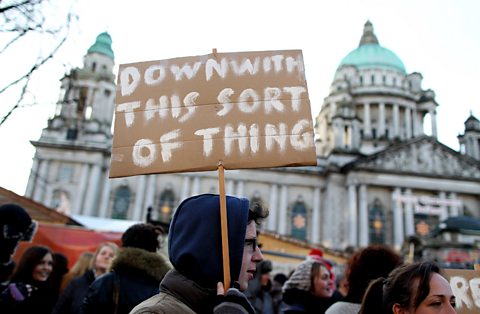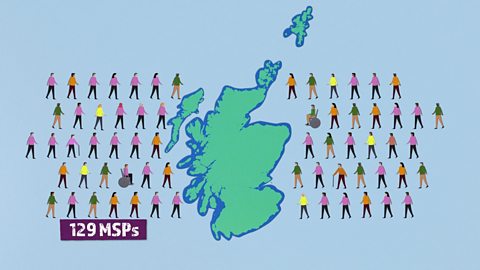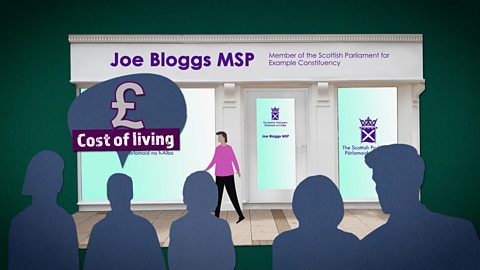Understanding pressure groups in Scotland: types, roles and influence
Quick version
- Pressure groups are organisations of people with similar views who aim to influence decision-makers without seeking political power.
- They encourage public participation in democracy outside of election cycles.
Types of pressure groups in Scotland:
- Insider groups have strong government connections and are consulted by officials for advice.
- Outsider groups do not have direct government influence and rely on public campaigns to gain attention. For example Greenpeace and Friends of the Earth opposing fracking.
Methods used by pressure groups include:
- Demonstrations, marches, and rallies.
- Petitions and direct lobbying of MSPs (Members of the Scottish Parliament).
- Media engagement such as interviews, publicity stunts, and letter writing.
- Campaigns including distributing leaflets, canvassing, and raising awareness.
How do pressure groups influence:
- by size and membership. Larger groups can exert more influence, representing broader public interest and secure more funding.
- by public support. Public agreement with the group’s cause and tactics enhances their influence.
Learn in more depth
At elections the people decide which representatives they want to make decisions on their behalf. However, elections can be as much as four or five years apart so people must have other ways of influencing their representatives.
One way is through pressure groups.
What are pressure groups?
Pressure groups are organisations of people with similar opinions. Pressure groups do not want power for themselves instead they want to influence those in power. They also encourage responsible participation in the democratic process.
There are many pressure groups in Scotland who aim to influence political decision-making. Because the Scottish Parliament has a number of devolved powers, UK-based pressure organisations will often have a designated Scottish section.
For example, pressure groups covering education or health will have to have a very strong focus on the Scottish Parliament as those policies in Scotland are now very different from the rest of the UK.
How do pressure groups try to influence decision-makers in Scotland?
Pressure groups use a number of different legal methods to put their views across:
- Taking part in demonstrations or marches
- Organising petitions
- Lobbying (speaking directly to) MSPs
- Writing letters to politicians or to newspapers
- Giving interviews which are reported in the media
- Taking part in legal publicity stunts to gain media attention
- Posting leaflets through doors or canvassing door to door.
- Taking part in demonstrations, marches or rallies
- Organising petitions
- Lobbying (speaking directly to) politicians (MSPs or councillors) or media organisations
- Writing letters to politicians or to newspapers.
- Giving interviews which are reported in the media (radio, TV and newspapers)
- Taking part in legal publicity stunts to gain media attention
- Organising campaigns to raise awareness of issues or bring about change
Insider pressure groups in Scotland
Insider pressure groups are those that often have the support and the attention of the government. Politicians or officials will often approach them for advice and have regular discussions about laws.
For example, the EIS union is a teacher pressure group. They will rarely organise demonstrations or marches. Instead, they usually rely on meetings with the Scottish Government. They tend to be behind the scenes and away from the cameras to influence decision making.
Outsider pressure groups in Scotland
Outsider groups are those who do not have direct influence in the government. Their aims do not necessarily have the support of government. This means that they have to use the media and high profile campaigns to get their attention.
For example, in recent years a range of pressure groups such as Greenpeace and Friends of the Earth have organised protests in Scotland against the use of fracking as a way of getting gas from underground.

How influential are pressure groups?
Generally, the larger a pressure group, the more influence it can hold:
- larger groups can argue the issues they campaign on affect a significant part of the population
- a pressure group that can demonstrate it represents a large number of people can have a larger influence on voting and elections
- more members means more people can become active in pressure group campaigns and activity
- more members means more funding - the pressure group can use this for larger events, campaigns, advertising or even to fund legal action
However a pressure group's influence also depends on the views of the wider public:
- do they care enough about the issues the pressure group campaigns on?
- do they agree with the pressure group's position?
- do they approve of the pressure group's methods and actions?
Quiz
Recap what you have learned
The role of pressure groups:
- Pressure groups are organisations of people with similar views who aim to influence decision-makers without seeking political power.
- They encourage public participation in democracy outside of election cycles.
Types of pressure groups in Scotland:
- Insider groups have strong government connections and are consulted by officials for advice.
- Outsider groups do not have direct government influence and rely on public campaigns to gain attention.
Methods used by pressure groups:
- Demonstrations, marches, and rallies.
- Petitions and direct lobbying of MSPs (Members of the Scottish Parliament).
- Media engagement including interviews, publicity stunts, and letter writing.
- Campaigns including distributing leaflets, canvassing, and raising awareness.
Factors affecting influence:
The size and membership of pressure groups significantly influence their impact, with larger groups often wielding greater power. This advantage stems from their broader public representation, and have the potential to sway election outcomes, increased capacity for long-term campaign efforts, and easier access to funding.
A pressure group’s influence is also shaped by the level of public support for its goals, the importance of the issues it highlights, and the degree of public approval for its methods.
More on Democracy in Scotland
Find out more by working through a topic
- count12 of 18

- count13 of 18

- count14 of 18
